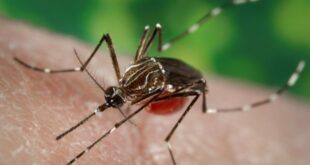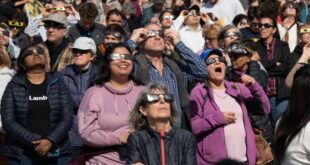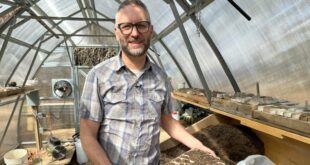Predators moved activity to night to avoid increased hikers as prey roamed more freely, B.C.-led study finds.

A massive survey analyzing animal behaviour during COVID-19 lockdowns has provided new insight into how humans can better co-exist with their wild counterparts.
It also provided some great photos of bison, grizzlies, baby moose and other animals in their natural habitats.
The study, published Monday in Nature Ecology and Evolution, involved 120 researchers worldwide and 5,000 camera traps that take pictures when triggered by the movement of wild animals.
It was led by wildlife biologist and University of British Columbia associate professor Cole Burton, who said the research was spurred on by the notion that as human activity was reduced due to COVID-19 restrictions, animal activity might increase.
“We all started to hear some of these emerging stories of, you know, animals running in the streets, or dolphins swimming up canals,” Burton said in an interview with CBC News.
“And we thought, hey, we’ve got a lot of these cameras out on the landscape studying animals before the pandemic hit, we can really try to use this opportunity to see if their behaviours changed and how they changed while people were undergoing lockdowns.”

How wildlife adapted during the pandemic
CBC Science Specialist Darius Mahdavi takes us through a new UBC study that challenges the idea of wildlife thriving during the COVID-19 pandemic. It reveals a complex shift in animal behaviour due to increased human presence.
A study published in the journal Science in July 2023, for example, indicated that when human mobility was constrained by lockdown measures, wildlife soon took notice — moving closer to roads and moving more freely across the landscape.
While that survey was largely about how animals behaved when humans moved out of urban spaces and roadways, Burton’s work focused on nature areas and parks, which in some cases saw an increased presence of people during the peak of COVID-19 restrictions, especially places close to larger urban areas where people looked for ways to socialize and get out of the house.

“We sort of went in with this notion that, you know, all these areas would have less people and animals might increase because they were released from that sort of stress of being around people,” Burton said.
“But what we found in the cameras is that there was a huge variation … some places actually saw a lot of human activity, even an increase in activity, whereas others like provincial parks were completely closed for a period of time so they saw big reductions in people.
“So we had this large variation of what people were doing and then we mapped on what the animals were doing.”

That, too, revealed some big variations, he said. Predators, such as wolves or wolverines, that tend to steer clear of humans “dropped out entirely” of some of the “busier landscapes,” Burton said, as more people moved into those spaces.
Conversely, some prey animals, such as deer and moose and elk, actually increased their activity as more people moved in, possibly because of the reduction in predators.
Another observation Burton made is there seemed to be an increase in animals coming out at night as a response to a higher number of humans out during the day.
“That seemed to be a kind of coping mechanism where, yes, they wanted to use the environment where people were, but they didn’t want to have direct encounters, so they were using it more at night.”
He said the findings of their study are useful amid a surge in outdoor recreation post-pandemic to understand how wildlife responds to human activity and to develop conservation plans, including the possibility of setting “quiet hours” for certain spaces.
“To help animals there, we might need to think about making sure they have safe passage over busy roads at night or limiting the amount of nighttime human activities in some of these areas.”
See more photos used in the study below:





With files from Rafferty Baker, Wallis Snowdon and The Canadian Press
*****
Credit belongs to : www.cbc.ca
 Atin Ito First Filipino Community Newspaper in Ontario
Atin Ito First Filipino Community Newspaper in Ontario






